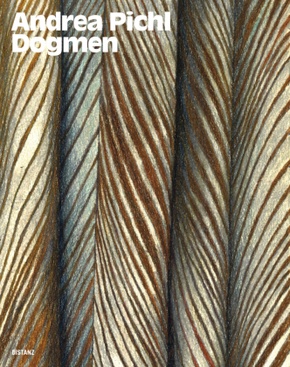
| Verlag | Distanz Verlag |
| Auflage | 2022 |
| Seiten | 96 |
| Format | 24,0 x 0,8 x 30,3 cm |
| Gewicht | 502 g |
| ISBN-10 | 395476508X |
| ISBN-13 | 9783954765089 |
| Bestell-Nr | 95476508A |
Nutzbauten der Vergangenheit in heutiger Gestalt
Die Gestaltungsformen des Alltäglichen, in historischer und gegenwärtiger Form, stehen im Zentrum der Arbeiten von Andrea Pichl (geb. in Berlin, lebt und arbeitet ebd.). In verschiedenen Medien wie Collagen, Fotografien, Installationen und Zeichnungen entwickelt sie ihre künstlerische Interpretation, verdichtet durch eine Auseinandersetzung mit Design- und Kunsttheorien.
Die Publikation, die anlässlich der Ausstellung in der Schwartzschen Villa in Berlin erscheint, ist der Thematik des sogenannten "Behelfsheims" gewidmet. 1943 beauftragte der Reichskommissar für den sozialen Wohnungsbau den Bau von normierten Miniatur-Eigenheimen, um aus vorhandenen Werkstoffen provisorischen Wohnraum für "Luftkriegsbetroffene" zu schaffen. Andrea Pichl durchleuchtet dieses historische Wohnkonzept und richtet ihr Augenmerk zugleich auf das gegenwärtige Aussehen der Häuser, indem sie Gestaltungsformen heutiger Bewohner_innen der "Be helfsheime" in Wilhelmshaven, Ost- und Westberlin in ihrer Installation aufgreift.
Zusätzlich enthält der Katalog ein Konvolut von Pichls Zeichnungsserie Stasizentrale, die nach ihren eigenen fotografischen Raumansichten der ehemaligen Stasizentrale in Berlin-Lichtenberg entstanden. Mit Textbeiträgen von Ulrike Kremeier und Christine Nippe.
Yesterday's Utilitarian Architecture as It Appears Today
Andrea Pichl's (b. Berlin; lives and works in Berlin) work turns the spotlight on the design vocabulary of the everyday world, in its historic and contemporary guises. She employs a range of media including collages, photographs, installations, and drawings to develop her creative interpretation, to which an engagement with theories of design and art adds depth.
The publication, released in conjunction with the exhibition at the Schwartzsche Villa, Berlin is dedicated to the so-called "Behelfsheim" ("makeshift home"). In 1943, the Reich Commissioner fo r Social Housing called for the construction of standardized miniature homes out of available materials to provide temporary shelter for "individuals affected by the air war." Andrea Pichl probes this historic conception of residential living while also examining the individual appearance of the homes today; her installation surveys the ways contemporary residents of the "makeshift homes" in Wilhelmshaven and East and West Berlin have adapted them to their needs.
The catalogue also contains a set of drawings from Pichl's series Stasizentrale, based on the artist's photographs of interiors at the former East German security service's headquarters in Berlin-Lichtenberg. With essays by Ulrike Kremeier and Christine Nippe.
